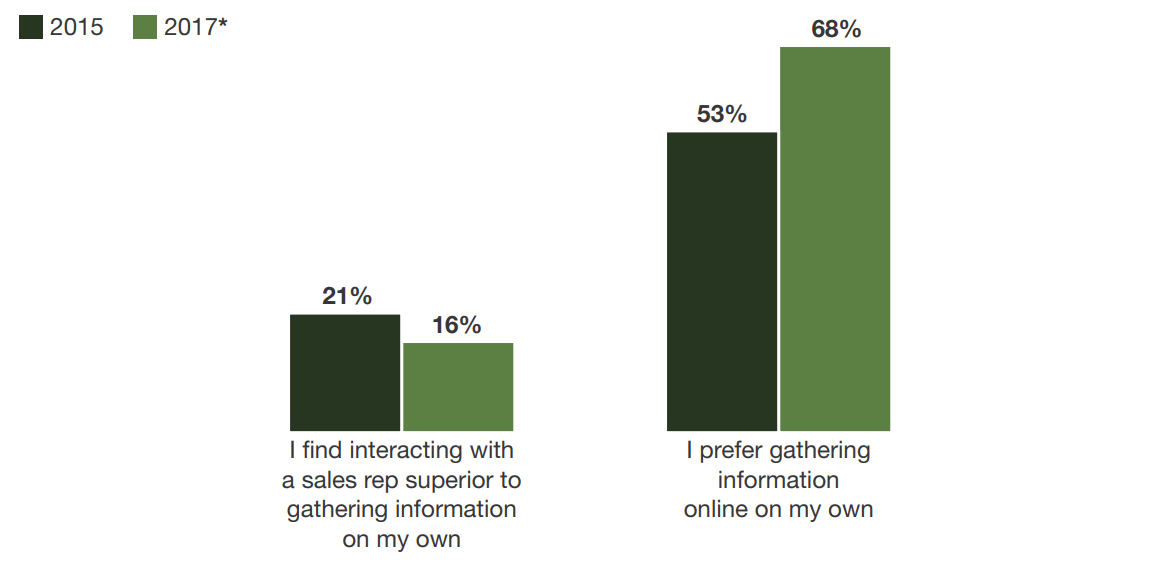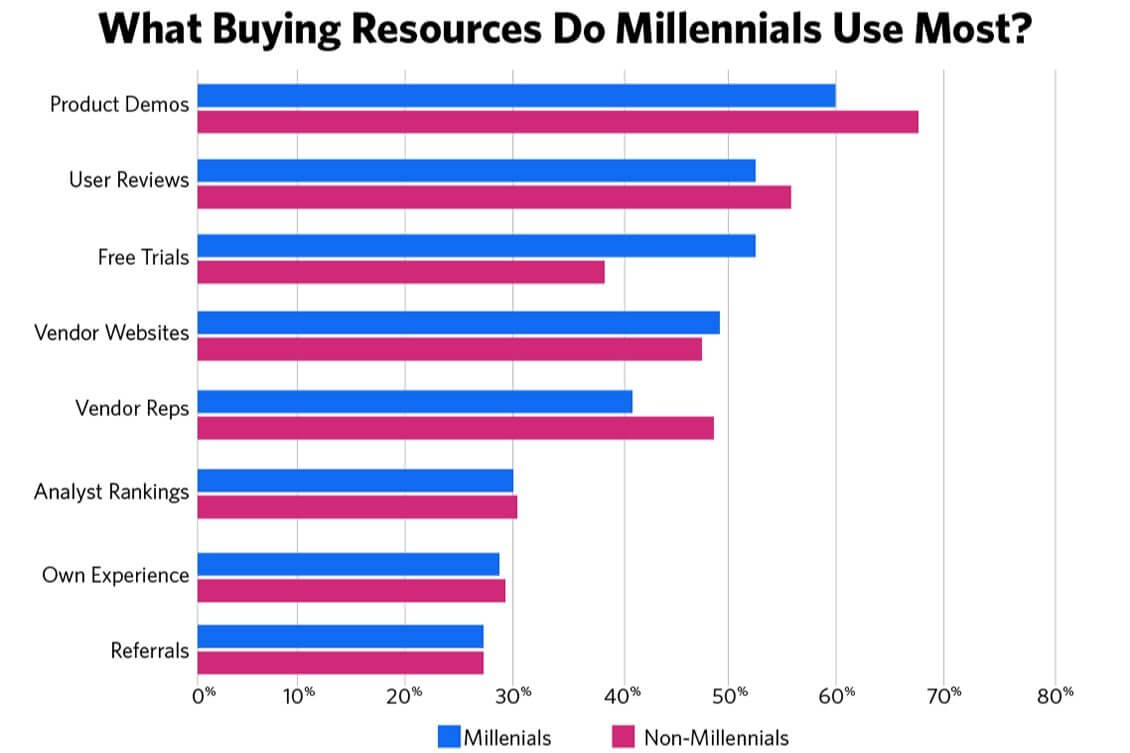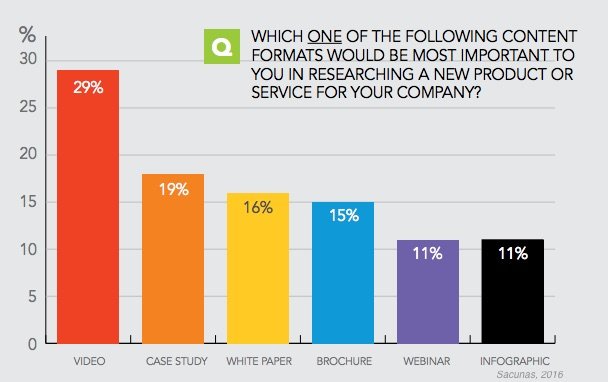They used to say that big large glass buildings don’t buy software, people do. But we would be more correct in saying that when it comes to business software these days, people aren’t buying software, large-framed glasses wearing Millennials are. And if you’re in the business of marketing or selling software, this has big implications for you.
What is the size of the opportunity?
There are currently 5.4 million Generation Y (otherwise known as Millennials) in Australia, and within the next 5 years this group will begin to dominate the workplace, making up 75% of all workers.
And they are already significant influencers or decision-makers when it comes to software purchases. Some estimates place this already at a 32/60 split between Gen X, and Gen Y.
60% of tech buyers are Millennials
Source: Trust Radius
This might sound surprising for those of us who can clearly remember what we were wearing in 1980 (no matter how much we wish we could forget). But the child born that year is now 42 and likely has 20 or more years experience under their belt. They are your new middle manager target market.
This, plus the rise of SaaS, means that users are now the buyers.
The advent of SaaS software in particular has opened the door to this tranche of staff being free to make significant software buying decisions. Monthly subscriptions and free trials mean teams can adopt a new platform without having to get senior approval for a large CAPEX spend.
Added to this is their desire to shape their careers around themselves in a way that’s not really been seen before. Millennials want to create the perfect environment for themselves, and that includes the software and systems that they use.
So given they are going to be a relevant target for those selling software in the business market, what do you need to know about them to get your message across?
They bring consumer decision-making to work
Born into a world in which mobile phones, the internet and LOL cats have always been a reality, Millennials have grown up feeling comfortable with the use of consumer solutions for communication, productivity and collaboration, and they are bringing those same expectations to work.

Source: Forrester
Attitudinally they just don’t have the same tolerance for inflexible or non-user friendly tools when presented with slow, less integrated IT-mandated systems for business. This is not an audience that will tolerate the blue screen of death.
77% of B2B buyers stated that their latest purchase was complex or difficult
Because they are also more able to consider and feel comfortable exploring new ways of doing things with no habits to fall back on, they are more likely to challenge the status quo – which is perfect for those selling software solutions.
Just in case you think this demand can be safely isolated to a single rather self-absorbed demographic, research into the workplace generational divide suggests that the pervasiveness of social and mobile technologies is driving all generations to have similar demands when it comes to the performance of business software, with an expectation of speed, accessibility, ease of use, and efficiency. There is no escape.
This means that tech companies that put a focus on improving user experience in their product will be better positioned across the board.
When selling software to Millennials, eat the elephant one bite at a time.
Rather than trying to engage with an entire business from the top down, successful tech companies like Atlassian have taken the approach of selling software on a team by team basis rather than an entire company.
This has been enabled in part by an increasing view that software can be a competitive advantage, which means the demand is coming from internal teams, rather than a CIO-driven purchase. SaaS solutions allow Millennials to quickly trial and then advocate for the solution internally, without having to deal with IT as a gatekeeper. (Easier to ask forgiveness than permission perhaps).
When it comes to influences, digital is at the core of their life
The comfort this group feels with digital technology means the fallbacks of B2B tech companies – the tradeshows, trade magazines and even webinars are going to need to be reconsidered in the light of new marketing techniques like content marketing and chat based applications than can provide customised information throughout the sales funnel.

Source: TrustRadius
Almost every purchase – work related or otherwise – starts with an online search including your social media, those of your competitors, review sites and industry forums, before these views are confirmed with offline sources like colleagues.
The biggest takeaway is that when selling software to Millennials there is no single channel that dominates – it pays to have a little something for these information snackers at every potential touchpoint and to suit every likely device.
That’s not to say they won’t want to engage with your sales team, but this will be much later in the piece. Because of their confidence about using the internet to research everything from restaurants to potential life partners, millennial software buyers will have thoroughly researched their needs and potential solutions, and come to the table with a deep understanding of what they require.
Some are terming this the end of solution selling; but in any case, this age group has likely had fewer in-person B2B sales experiences, and what experiences they have are likely to be short and to the point, with little opportunity to build personal rapport.
This means your content needs to step up a level.
Think words like pain points, entertaining, useful, authentic, inspiring, customer-centric, useful, insight-driven, sharable, useful, surprising and personalised (plus, did we mention useful?), and banish concepts like specifications or thought leadership (so 2010). Think beyond the whitepaper and consider alternative forms like video and social media to help broadcast your message.

Final thoughts on selling software to Millennials
-
Offer free trials to make it easier to drive the wedge in.
-
Focus on a great user experience and retention will take care of itself.
-
Give your business a story and a purpose that they can engage with.
-
The traditional marketing rules don’t always apply, particularly for SaaS.
-
Create useful, self-serve content across all channels throughout the buying process.
-
Always be authentic – no-one can hide from a Millennial on the internet.




